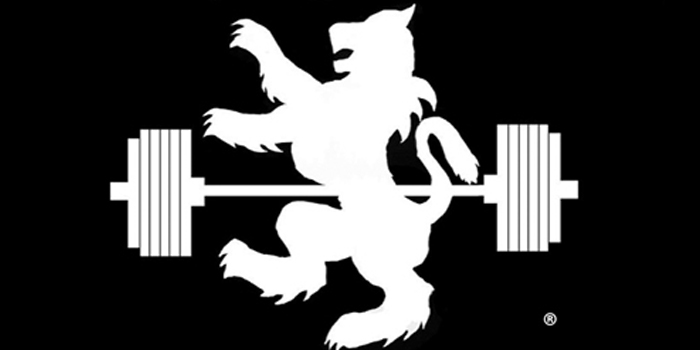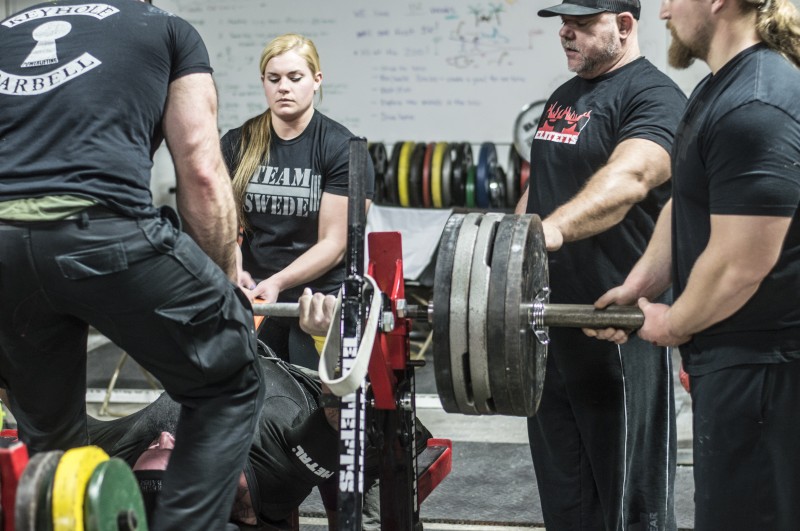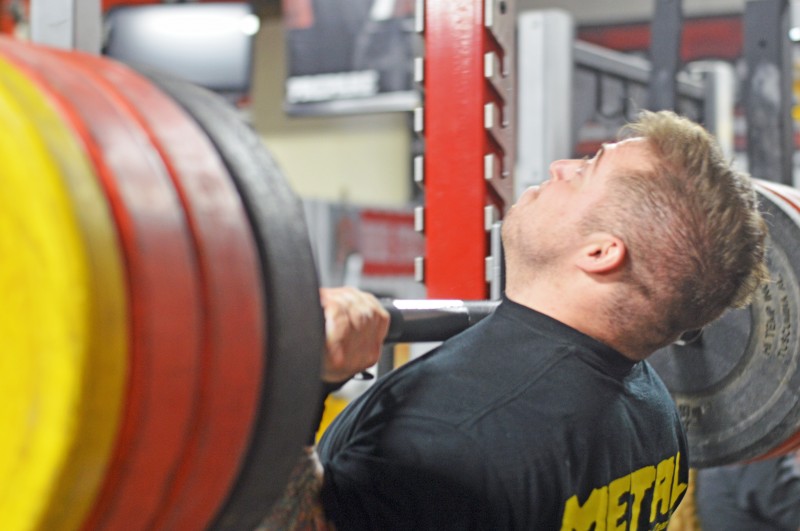
I have to admit, I’m really jealous of modern single guys and the technology they have at their disposal to meet women. They have cell phones and email and Facebook and Instagram and Tinder and about a million other tools we never had while growing up.
My hit-rate would have been so much better if I’d had access to these tools—particularly after I paid to have my cover photos Photoshopped.
Hell, I was lucky to have a landline in my dorm room. Coupled with cable television, my college roommate and I could barely afford those two bills alone.
Although the singles dating scene seems exciting, especially to a married old codger like me, my experiment with singles is of a completely different variety—though perhaps no less exciting to this audience.
I’m utilizing low volume bench press singles in conjunction with heavy doses of standing military press and dips in order to increase my upper-body strength while concurrently attempting to reduce the strain/wear on my shoulders — feels like an oxymoron.
Shoulder Woes
Nearly two years ago my younger son suffered a fairly significant pitching injury. In the early innings of one of his outings, the bone in his arm pulled away from the growth plate near the elbow. The injury required a relatively simple surgery — essentially a screw to hold everything in place allowing it to heal properly.
His injury provided me with the opportunity to become acquainted with a well-regarded sports medicine practice, greasing the wheels for me to finally have my aching shoulders examined. Frankly, I’d been having chronic shoulder pain for as long as I can remember. The condition has ranged from acute pain to a dull throbbing toothache in my shoulder and has impeded everything, ranging from training to sleeping to drying my hair (what’s left of my hair) after a shower.
RECENT: Training and the Dead Cat Bounce
“How long has this been bothering you?” the Physician’s Assistant (PA) inquired.
“I’m not really sure,” I said with a smirk of embarrassment plastered across my mug. “Maybe twenty-plus-years?”
“Twenty years?”
“Yes—to varying degrees; essentially as long as I can remember. I think it started during high school football.”
So actually more than twenty years ago—well, I’ve been busy. Can’t run to the doctor for every little ache and pain.
They elected to take x-rays of both of my shoulders and when the PA returned to the examining room with the developed pictures in hand, he was donning a look that was simultaneously both stern and somber.
Oh well, maybe this was a bad idea.
“When I look at these x-rays I can see your shoulders are both pretty damaged. I’m surprised you’re doing as well as you are in terms of range of motion and that the pain in not worse. You can see here that the head of your humerus is misshapen from all of the heavy wear and tear over the years.”
To make a long and sad story short, his medical advice was to stop the heavy bench pressing, which was something I wasn’t prepared to hear (and candidly, something I wasn’t prepared to do).
I know what you’re thinking. That diagnosis is no surprise.
Training
When I resumed training following the doctor’s appointment, I implemented a lower body focus. At a minimum, I could get my legs back on track while digesting my doctors’ advice.
When I eventually started seriously training my upper body again, my plan was to utilize a significant volume of standing military press and dips. Ironically, military pressing doesn’t irritate my shoulders. For that I can offer no explanation.
In terms of negative shoulder impact, dips have historically been hit or miss for me. Most recently, for whatever reason, I’ve been able to perform them without pain and have been able to make solid progress.
I’ve also incorporated a lot of neutral grip chin-up work for which the Monkey Chin Bar on the elitefts Collegiate Power Rack has proven invaluable. The neutral grip option also helps promote my general shoulder health.
After logging several solid months of training, during a maximum effort upper body session, after I’d completed standing military, I had the urge to bench. I decided to throw in a few sets of bench press singles, if only to see how they would feel after a long hiatus.
I elected to keep the volume ultra-low with the intention that fewer reps would minimize the wear and tear on my shoulders.
The plan was only to do singles. I started with 135 for a single, slapped on another two plates and performed 225 for a single and continued with the same pattern. My body was already warm from the overhead work, so the large jumps in weight were not an issue.
Bench Press
- 1 x 135
- 1 x 225
- 1 x 315
- 1 x 405
Each of the sets felt surprisingly good (and surprisingly easy), including the 405. I was pleased I still had the strength to move that amount of weight without doing any direct bench training in five to six months.
In fact, I felt so good I decided to throw 505 on the bar to perform a static hold. I wanted to see how it would feel as it had been some time since I held that amount of weight in my hands. I set the rod and pipe safety pins a few inches below the J-Cups to enable me to perform a bit of an eccentric following the hold, but nothing too crazy. I wanted to finish on a positive note and the last thing I needed was an injury or a setback of any variety.
My son gave me a lift-off and I held the weight for a couple of seconds before slowly lowering 505 the couple of inches to the pins. Nothing incredible, right? Not a personal record, but a big win given the circumstances. I don’t think I’m at the stage where I could successfully press it, but I’m a lot closer than I would have initially thought.
Bench Training Frequency and Modalities
My initial plan is to perform a maximum effort upper body day once per week that relies primarily on standing military press as the main movement and add the bench singles work about every other week. Once I get a better sense of what my shoulders can withstand, I may move to more of a Multiple Exertion Method — a variety of Max Effort Training I initially read about in the elitefts Bench Manual.
The Multiple Exertion Method involves multiple sets of singles (sometimes doubles) with relatively strict rest periods. This method utilizes the same load for multiple sets. An example would be 10-15 singles with a weight that is 70-80% of your maximum single, with two to three minutes of rest between sets. Here’s an example of how I may employ:
Bench Press
- 1 x 135
- 1 x 225
- 1 x 315
- 10 sets of singles with 380
I am also toying with the idea of adding some dead presses off the pins. This is more formally known as the Maximal Concentric Method.
If I elect to make this addition, does that mean I’m going deep down the rabbit hole again? Probably, I guess, but old habits certainly die hard.
WATCH: Chris Duffin Interviews Ryan 'Bench Monster' Kennelly
The Maximal Concentric Method involved lifting a weight from the bottom position (or near bottom position) without lowering it. It can be performed off the pins in a power rack or off suspension chains. The addition of concentric-only movements allows the athlete to avoid the negative phase of the lift, which is responsible for causing a good degree of muscle soreness and to that end it is a way to allow additional recovery. Here’s a full view into one of my ME Upper Sessions:
Standing Military Press
- 10 x 45
- 10 x 95
- 10 x 135
- 5 x 155
- 3 x 185; add belt for this set
- 3 x 225; add belt and wrist wraps (~75% max single)
- 6 x 225; add belt and wrist wraps (~75% max single)
Bench Press
- 1 x 135
- 1 x 225
- 1 x 315
- 1 x 405 (may change to Multiple Exertion Method)
- May add some Maximal Concentric training here (dead presses)
Dips
- 1 x 5 bodyweight
- 1 x 10 bodyweight
- 4 sets of six to eight reps weighted (~45 pounds)
Band Pushdowns
- Sets and reps significantly vary depending on feel
Seeking Reader Input
As I’m in the early stages of experimenting with the utilization of singles-only work in my bench press training, I would be very interested to hear constructive thoughts from those of you that have experimented with these techniques before, whether because of injury (and the desire to reduce training volume) or simply because you’ve found it effective.
At forty-six years old I’ve found that I need to make adjustments in order to keep my training productive. I want to be realistic without conceding too much to Father Time, but I’m just not ready to cash all of my training chips in.













I’m fortunate in that I’ve always had good strength retention. Not sure if it is a function of genetics or just a long body of work spanning 30+ years. I don’t plan on incorporating any (bench) deload sessions because I don’t want the additional bench volume to wear on my shoulder. It’s like Matt Rhodes says, he only has so many bends left and he doesn’t want to waste them on socks – I only have so many presses left and don’t want to “waste” them on deloading.
Remember though, this prescription is specifically for an older lifter with a lot of wear and tear and I’m still in what I would term an “experimental phase” with this programming (i.e. not sure if it’s going to work or not) – I can share with you, it’s been good for me from a psychological perspective so far.
Short answer: I am training by feel and if my shoulder needs a break, I’m more apt to omit the work versus deload.
EE